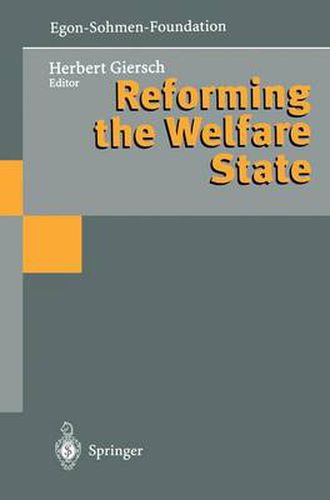Readings Newsletter
Become a Readings Member to make your shopping experience even easier.
Sign in or sign up for free!
You’re not far away from qualifying for FREE standard shipping within Australia
You’ve qualified for FREE standard shipping within Australia
The cart is loading…






This title is printed to order. This book may have been self-published. If so, we cannot guarantee the quality of the content. In the main most books will have gone through the editing process however some may not. We therefore suggest that you be aware of this before ordering this book. If in doubt check either the author or publisher’s details as we are unable to accept any returns unless they are faulty. Please contact us if you have any questions.
This book is the sequel to Fighting Europe’s Unemployment in the 1990s, the collection of papers presented at the Salzburg Symposium of the Egon-Sohmen-Foundation in 1994. Though the problem of un employment was urgent already then, it has not found a practical solution in the meantime, and even intellectually it remains somewhat of a mystery. A clue is offered by the contrast with the United States: they have the working poor; we, on the old continent, have the welfare recipients. This brings the relationship between unemployment and the welfare state to the fore. On closer inspection, however, the matter appears to be much more complicated than the transatlantic contrast suggests. Consider only that the welfare state and what is called social policy have a long tradition in Europe. They obviously did not pre vent or noticeably hamper the decline in unemployment in the 1950s and the emergence of full employment in the 1960s. This leaves room for various conjectures. Does the welfare state matter only after a long time lag or after it has grown too fast or too much beyond a critical size? Is it the welfare state per se that is harmful to employment or do its harmful effects arise only under certain conditions, e. g.
$9.00 standard shipping within Australia
FREE standard shipping within Australia for orders over $100.00
Express & International shipping calculated at checkout
This title is printed to order. This book may have been self-published. If so, we cannot guarantee the quality of the content. In the main most books will have gone through the editing process however some may not. We therefore suggest that you be aware of this before ordering this book. If in doubt check either the author or publisher’s details as we are unable to accept any returns unless they are faulty. Please contact us if you have any questions.
This book is the sequel to Fighting Europe’s Unemployment in the 1990s, the collection of papers presented at the Salzburg Symposium of the Egon-Sohmen-Foundation in 1994. Though the problem of un employment was urgent already then, it has not found a practical solution in the meantime, and even intellectually it remains somewhat of a mystery. A clue is offered by the contrast with the United States: they have the working poor; we, on the old continent, have the welfare recipients. This brings the relationship between unemployment and the welfare state to the fore. On closer inspection, however, the matter appears to be much more complicated than the transatlantic contrast suggests. Consider only that the welfare state and what is called social policy have a long tradition in Europe. They obviously did not pre vent or noticeably hamper the decline in unemployment in the 1950s and the emergence of full employment in the 1960s. This leaves room for various conjectures. Does the welfare state matter only after a long time lag or after it has grown too fast or too much beyond a critical size? Is it the welfare state per se that is harmful to employment or do its harmful effects arise only under certain conditions, e. g.